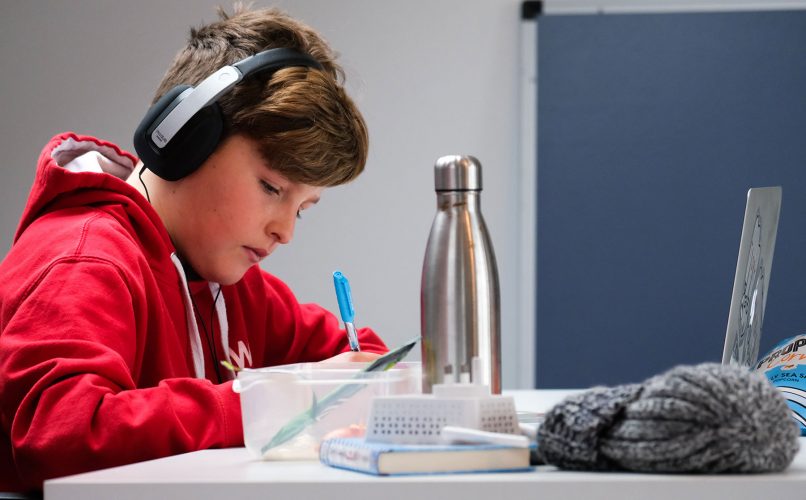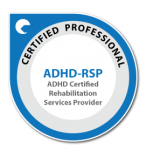

In a previous blog, ADHD And Refusal To Complete Assignments, I discussed kids and teens refusal to do schoolwork. I offered that we should be asking why, rather than punishing. I have had a lot of positive feedback about that blog, so I would like to dig into the issue a little bit further. If you have not read it yet, start there!
All behavior is a communication. When we stop seeing children as manipulative, defiant, pushing our buttons, purposefully behaving bad little beings, we will discover exactly what they are trying to communicate. Think about when you are mad or frustrated or sad beyond belief. You are not able to access your best communication skills! You may yell, scream, act out physically, cry or even throw things or lash out at others. You are definitely not able to use emotional regulation techniques in the moment when you hit that point of no return. It happens to many of us, even as adults. Thankfully, most of us do not reach this level of meltdown frequently, and if we are approaching it, we know why and how to figure out what to do to prevent it.
Kids haven’t figured themselves out yet. They don’t quite know about their learning style, their sensory preferences, their threshold for frustration. They don’t know why they can be sweet and agreeable one moment and exploding into fury the next. They often live in the moment, without thinking ahead to what challenges the day holds, or reflecting about lessons from previous difficult days that they could apply to avoid a repeat situation. If they struggle with a particular area and the problem persists, know that it will continue if unaddressed, possibly for a very long time!
Using Dr. Ross W. Greene’s Collaborative and Proactive Solutions model (CPS), we must first identify the actual problem your child is having. Ideally, this begins with you being very clear about exactly what expectations you have for your child, and have previously communicated them in a way that he or she understands. In this case, your expectation is that your child will do all assignments from school. If he is failing to do this, that becomes an unsolved problem.
The problem will always be phrased as “difficulty with doing something”. Let’s use the example “difficulty with getting started on math homework right after school”. Notice how it is very specific. This will parse out what homework, when the difficulty occurs, and how it manifests (getting started, finishing, etc). Also notice that I didn’t add any behavioral verbs such as “defiance towards” or add any adult theories such as “because he wants to play instead of do homework”. Keep it focused on how your child is failing to meet the expectation that you have set.
After you have done this, take a look at the list of lagging skills that go along with the CPS material. This list is called the Assessment of Lagging Skills and Unsolved Problems (ALSUP). It lists executive functioning skills that you will identify as skills that are lagging or not in your child. It includes items like “difficulty maintaining focus” and “difficulty persisting on challenging or tedious tasks”. From there, you can theorize what may be causing the unsolved problem (refusal to do schoolwork) but the only way to really know is to ask your child him or herself. The lagging skill will be academic, social, motivational, attentional or a combination.
You are now ready to sit down with your child at a calm time and have a discussion. The discussion always begins with the Empathy Step and starts with the words “I notice”. In this case, you would say “I notice that you are having difficulty getting started on your math homework after school … what’s up?” The conversation should flow with you asking questions for clarification, and reflecting back what you are hearing. You are gathering information (who, what, when, where, why, how) and asking your child what they were thinking when the incident occurred, and why it occurs under some conditions and not others (if this is the case). You are not injecting your own stories and theories and you are not reacting angrily. If your child becomes upset while discussing this, you can deescalate by matching his or her tone and reflecting their emotion, to show that you are listening and understand. Maintaining a calm “customer service” demeanor can sometimes come off as insincere. Rather, you can repeat back what you are hearing in a way that reflects the urgency of his or her explanation. (For more about how to deescalate using this technique, check out this podcast from Connected Parenting). Above all, you are information gathering, mirroring with empathy, and listening.
If you made it through the first step and you have a good understanding of “the why” for refusal to do schoolwork, you are on the right track! If your child responded “I don’t know” or “I don’t care” you will need to do a little more investigation. Ask more probing questions and wait for answers. If you still get silence, your child may truly not know, or may not be used to thinking about explanations for their different behaviors. (They often believe that things just happen and they do not feel like they are in control of any of it.) At this point, you can offer some theories and take a few guesses. It is important to continue on this track until you have identified the lagging skill or skills responsible for the unsolved problem. We can’t solve a problem if we can’t identify the root cause!
After the Empathy Step which is all about information gathering and mirroring without judgements, the next step of the CPS model is called Define the Problem. Your conversation begins with a phrase like “My concern is…” or “The thing is…” followed by how the unsolved problem is manifesting. Most adult concerns will either be about how the problem is affecting the child, or how the problem is affecting others. For refusal to do schoolwork, you might say “The thing is, when you don’t do your school assignments, you are getting zeros on everything and it is bringing your grade down”, “My concern is that you might fail math and have to repeat it over the summer” or “The thing is, you are developing a habit of not doing assignments and this is going to have real consequences when you are in high school next year”.
Whatever it is, it is your concern and your child does not have to agree! If he hates math, the chances are high that he will respond with “I don’t care”. That is okay. The important part is that you make your concern known. This is still not yet the time to offer solutions. It also does not involve judgment, lectures or sarcasm. The former will come next, and latter doesn’t really figure into the CPS model!
The final step of the CPS model is the Invitation Step. This is the step where you and your child together, in a collaborative manner, will generate solutions that are realistic and address everyone’s concerns. Use the phrase “I wonder if there is a way to figure this out together” after restating the previous two steps. This will sound like: “So you are finding it hard to complete the math worksheets because [insert the reasons your child gave you or that you discovered]. And I am concerned because I don’t want you to fail math. I wonder if there is a way that we can figure out how to get those worksheets done while [addressing the stated concern about why they are not doing the assignment]”.
Now invite your child to offer the first solutions. Their first idea may be “just not do them” and while that does address their concern, it does not address yours. So they (or you) may come up with solutions like getting help, doing them with a friend or parent, doing a little bit at a time then taking a break – there are infinite possible solutions depending on what the lagging skills are. This is where you collaborate on what seems like the best possible solution. What seems at first to be best, may not be and that is okay. The CPS model is a process and sometimes the solution was the right one immediately, and sometimes it takes more time to land on the solution that will stick. While it seems like it may take way more time than just ordering your child to do the darn homework, if that is something that you’ve already tried repeatedly and it’s not working, it is time for a new strategy.
I recently read something in a parenting book that stuck out to me, because I love a great analogy. If you walked into your living room and there was a post in the middle of the floor and you smacked right into it, the next time you walked in, you would go around that post. But parenting often involves walking smack into that post over and over again, for no good reason other than it’s what we always do and it’s expected. Your usual parenting methods are the post: familiar, present, but doing you no good if you continue to get an unpleasant result.
Learning a new technique takes commitment and energy, but I promise that this one is well worth it!
The best part about using the CPS method is that it takes away the rewards and punishments cycle we often use when trying to gain motivation. Having a voice and fixing the root of the problem are motivation creators.
I do know from my practice that this doesn’t happen overnight and that there are fits and starts, as with any major change to the typical protocols. This is where consequences may factor in. Problems that have yet to be solved may produce natural consequences. Natural consequences are always preferable to imposed consequences. However, the issue I run into with my clients is that when the stakes are perceived as low, as they typically are in elementary and middle school, outcomes such as failing grades do not frequently translate into grade retention or other natural consequences. Kids often feel like they can “get away” with refusal to do schoolwork because “it doesn’t matter anyway”. This is where parents will often impose consequences, such as taking away electronics, participation in extracurricular activities or time with friends.
A consequence could also be enacting a behavior contract of sorts, with a CPS spin. If everything was agreed upon but your child is still not doing their part, you can write it up in a way that reflects what everyone’s collaborated solutions were, and what happens if the solution is not followed through with. At this point, you would go back to the Empathy Step and find out WHY the solution was not used, but as the parent, you may also decide to impose a consequence. Once you begin CPS, you might find that adult imposed consequences erode trust in the process, and just returning to step one and starting over would better serve everyone. Your unsolved problem would then be “difficulty following the solution to refusal to do schoolwork that we had agreed upon” and go from there.
I love working with clients and the CPS model but I do know that it involves a big mindset shift on the parents’ part. So many are stuck in that “my way or the highway” pattern that has you smacking into the post daily. This model does not make you a pushover at all! It makes you a compassionate parent raising a child with respect, who is learning to solve life’s problems.
Your child is not responsible for your feelings. Please avoid “This makes Mommy sad”, “You hurt my feelings when you behave that way” or “You are making me angry” and all other iterations. This is too much pressure on children, and it is teaching them to be people-pleasers and that they exist to take care of other people’s feelings. This is simply not true. If you are feeling mad, sad, frustrated and everything in between over your child’s refusal to do schoolwork and other challenging behaviors, the best thing you can do is be a good example. Show more empathy. Change your mindset. Work on your own emotional control and model it. Yes, your feelings DO matter but it is a huge burden to tell children that they need to make Mommy happy or that Daddy will be mad when he hears about the call from the principal today. If you find yourself struggling with your own feelings and emotions over your challenging child, please seek an appropriate outlet such as a marriage and family therapist, another type of counselor, or a life coach who specializes in family relationships.
I know this is a lot of information to digest and figure out how to implement. I want everyone to know about all of these tools – but I know it’s not easy to do it on your own. I am here for you! This model can be implemented with very young kids through teens. You can even try it on your spouse or mother-in-law! It can change how you view any problems, whether it’s refusal to do schoolwork or issues with chores, social skills, motivation and more.
For much more on executive functioning skill building, motivation, and parenting help, check out my self-paced online ADHD courses for parents. For more 1:1 help, and to really dive into the CPS model in your family, fill out my ADHD questionnaire to see if we are a good fit to work together.




Copyright 2024 © Kids Empowered 4 Life. All rights Reserved.
All information on the Website is presented as informational only and is not a replacement for therapy assessment, diagnosis, intervention, or medical advice. The information provided on the Website is provided “as is” without any representations or warranties, express or implied. Kids Empowered 4 Life assumes no responsibility for errors or omissions that may appear in the Website.